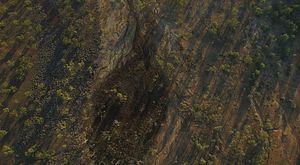Usually by-elections (known as special elections in the United States, by-polls in India) are local affairs. Divorced from the larger strategies of political parties fighting a campaign on broader national issues, they tend to focus in on the electoral district itself, the relationship of the candidate to the seat, and how the interests of the community are being considered and will be affected.
Yet an interesting by-election is scheduled March 17 in the inner-city Melbourne electorate of Batman (yes, that’s the name of the electorate, but pronounced with an emphasis on the “bat” and less on the “man”), where the dominant issue is instead 2,000 kilometers (1,240 miles) away in central Queensland. There an Indian conglomerate, Adani Group, is seeking to construct what, if approved, will be one of the world’s largest coal mines, and the issue has become of great concern to the people of inner-city Melbourne.
The Carmichael Mine has been controversial from its inception. It has been estimated that the average annual amount of carbon dioxide (CO2) released from burning the coal produced by the mine would be the equivalent of the entire annual CO2 output of Malaysia or Austria. Environmental groups have campaigned heavily for the project to be stopped, and their campaign has gained significant traction within Australian society. Australia’s Pacific Island neighbors — whose very existence is threatened by issues related to climate change — have also lobbied the Australian government to stop the project.
However, both major Australian political forces have supported the project, seeing it as an opportunity to boost local industry in central Queensland, assist in the development of Australia’s underpopulated northern regions, and help kickstart an underdeveloped relationship with India. The project is particularly important diplomatically given Gautam Adani’s close relationship with Indian Prime Minister Narendra Modi.
Yet, unlike most other electoral districts in the country, the seats around the central areas of Melbourne are not contests between the Labor Party and those parties of the conservative Coalition. Instead they are a contest between the Labor Party and Australia’s third political force, the Greens, which shifts the debate away from issues that divide Labor and the conservative parties, and to issues that divide Labor and the Greens. Support for Australia’s coal industry is a significant divide.
Over the past two decades Australia’s young, educated, affluent, “cultural elite” have steadily colonized the inner suburbs of Melbourne. As the city’s traditional working class have been priced out of the region, the electorates in this once solid Labor heartland have become increasingly contested by the Greens. The seat of Melbourne itself (where Australia’s peak union body is located) fell to the Greens in 2010, Labor held the seat of Batman in 2016 only due to Liberal Party preferences (in Australia’s ranked ballot voting system).
The “post-materialist” voters who are attracted to the Greens are less concerned with traditional Labor issues like job security, work conditions, wage growth, and the costs of living. Instead they focus on broader concerns like climate change and Australia’s treatment of asylum seekers. With the Carmichael Mine currently the primary target for environmental groups in Australia, the issue is at the forefront of the Greens’ policy concerns.
With the threat of Labor losing a seat it has held almost continuously since 1910, the by-election in Batman has seemed to produce an extraordinary shift in the party’s policy. In announcing the Labor candidate the federal Labor leader, Bill Shorten, stated that he was “increasingly skeptical” about the Carmichael Mine. And in recognition of the cost of renewable energy dropping significantly in India, he added, “The world coal market doesn’t appear to be great economics for opening up the newest, biggest mine in the southern hemisphere.”
While this shift in Labor Party policy will be seen as a major victory for environmental groups opposed to the mine (especially with a likely Labor victory at the next federal election), the shift does put the federal party in conflict with its Queensland branch. In power in Queensland, the state Labor government remains supportive of the mine, despite the threat it poses to Queensland’s greatest tourist asset, the World Heritage listed Great Barrier Reef. This support has been sustained also despite Australia’s four largest banks refusing to lend money to Adani for the project.
As campaigning continues for the Batman by-election, Labor will increasingly be selling the idea that as a party capable of forming government only it will have the power to actually halt the Carmichael Mine. While this may be correct, because of Labor’s policy shift it is also obvious that the Greens now have the power to change Labor policy, thanks to their increased threat to Labor’s traditional geographic strongholds. Whichever party wins the seat, it seems opposition to the mine is gaining greater momentum, and this may eventually result in Australian policymakers attempting to find a new, less contentious path to advance the country’s underdeveloped relationship with India.

































